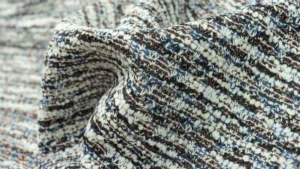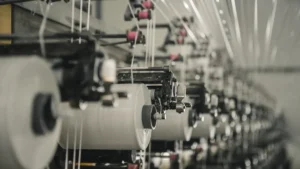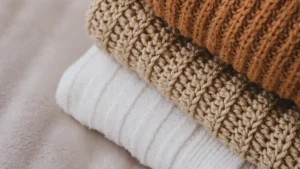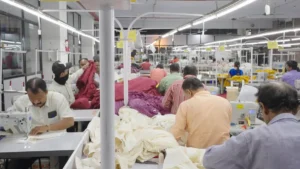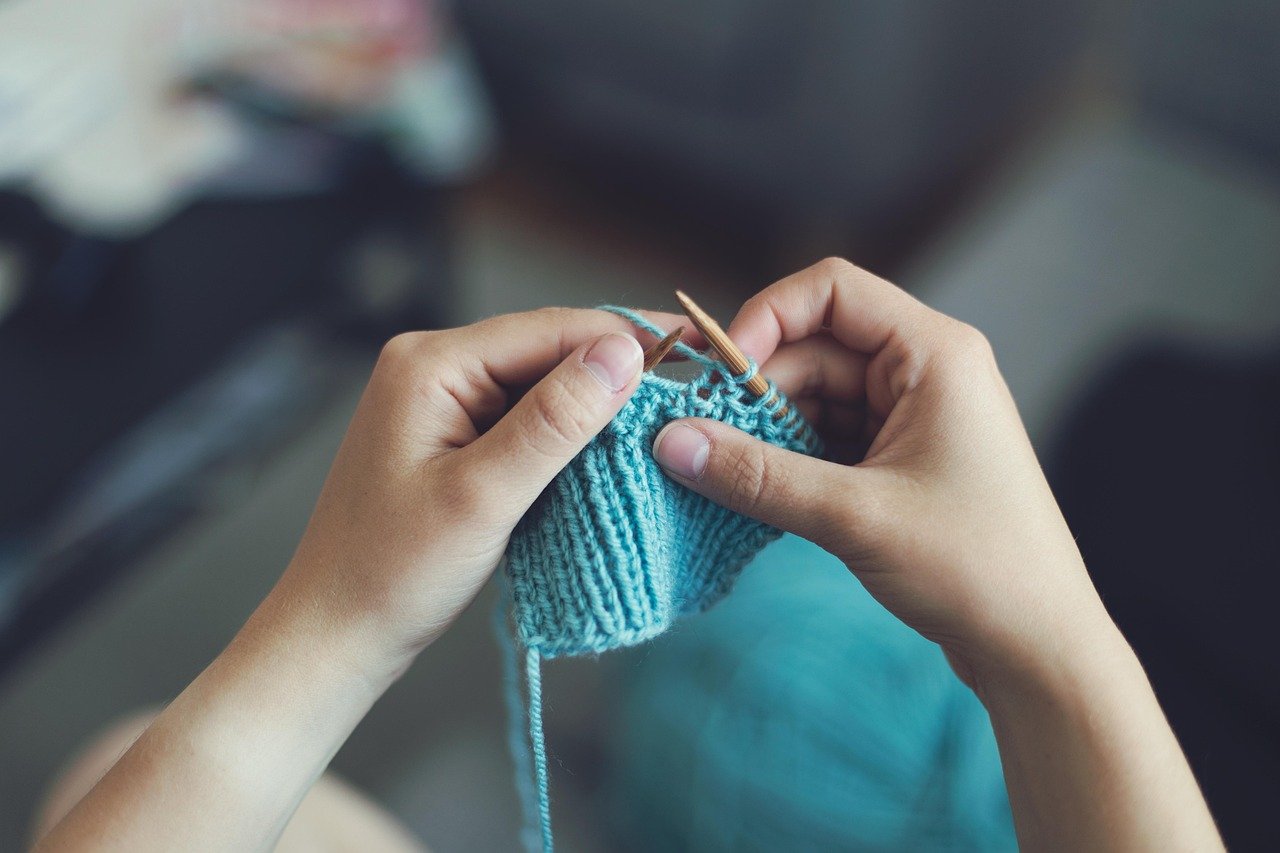
Picture yourself in a cozy café, where people of all ages gather with colorful yarn and needles. You hear laughter, see hands moving, and feel the buzz of creativity. Modern knitting culture looks nothing like the quiet pastime you might expect. With nearly 1.2 million patterns on Ravelry and a market valued at $3.2 billion, this hobby now thrives online and offline. You find connection, tradition, and innovation woven together in every stitch.
Key Takeaways
Modern knitting brings together diverse people who find creativity, stress relief, and community in this craft.
Digital platforms like Instagram and Ravelry connect knitters worldwide, making sharing and learning easy and fun.
Knitting supports activism by helping people create items for causes and express their values through craft.
Scandinavian knitting blends tradition with eco-friendly materials and bold designs that inspire global trends.
New technologies like 3D knitting and AI improve knitting quality and sustainability while honoring classic styles.
Modern Knitting Culture Today
Community and Diversity
You might think of knitting as a quiet pastime, but today it looks very different. Modern knitting culture brings together people from all walks of life. You see knitters of all ages, backgrounds, and identities sharing their love for this craft. Some people join for the benefits, like finding a creative outlet or a way to reduce stress and anxiety. Others want to connect with friends or learn new skills.
Women often lead the way in participatory arts like knitting.
People with higher education levels join in more often, showing that learning and curiosity drive this hobby.
If you have young kids, you might find it harder to make time for knitting, but many parents still find ways to join in.
Different ethnic groups show different levels of engagement. For example, Black and British groups often join performing arts, while Asian groups join less. Still, modern knitting culture welcomes everyone.
Your family background and early exposure to arts can shape your interest in knitting.
Married people sometimes join fewer arts activities, but they often enjoy cultural events together.
You can see how these patterns help shape the modern knitting culture. This diversity makes the community stronger and more creative. When you join a knitting group, you help promote community building and bring your own story to the table.
Digital and Social Platforms
You live in the 21st century, where technology changes everything—even knitting. Social media and online platforms connect knitters from around the world. You can share your projects, find inspiration, and even buy yarn with just a few clicks.
Metric / Indicator | Statistic / Detail |
|---|---|
Instagram #knitting posts | |
Ravelry platform usage | 74% of knitters use Ravelry |
‘We Are Knitters’ sales increase | 75% sales growth |
‘We Are Knitters’ social media growth | 50% increase in followers and YouTube subscribers |
Google Trends top countries for knitting | New Zealand, Iceland, UK, Australia, Ireland, Canada, South Africa, USA, Norway, Bangladesh, Denmark, Singapore, Finland, Pakistan, Hong Kong |
Number of Americans knitting or crocheting | 45 million (up 20% since 2020) |
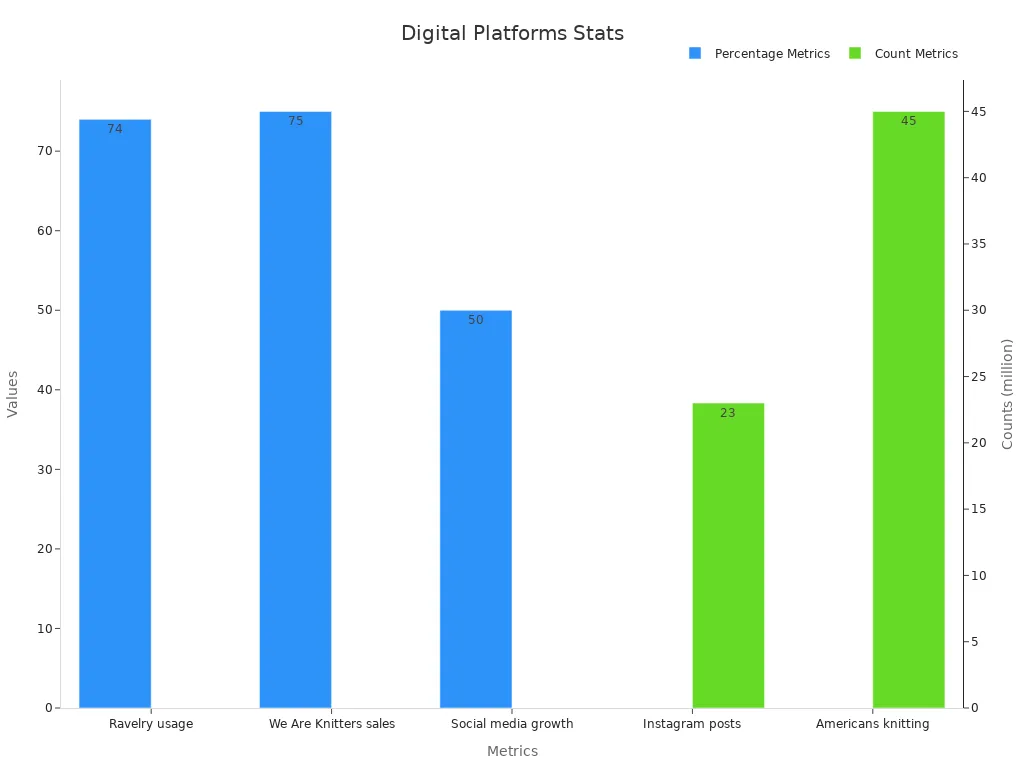
You might scroll through Instagram and see millions of #knitting posts. Maybe you use Ravelry, like most knitters, to find patterns or join forums. Platforms like OONIQUE use AI to match you with mentors and help you share your work. These tools turn knitting into a global creative outlet for self-expression. You can learn from others, teach new skills, and feel part of something bigger. The digital world has revived a traditional crafts and made it more exciting than ever.
Activism and Empowerment
Knitting is not just a hobby. It can also be a powerful tool for change. Many people use knitting to support causes, raise awareness, and empower others. You might join a local group or take part in a global campaign. Together, you can make a difference.
Aspect | Numerical Data |
|---|---|
Number of local knitting groups | |
Collective membership | Over 3000 local makers |
One-to-one interviews conducted | 7 |
Group interviews conducted | 1 (with 4 participants) |
You see hundreds of local groups and thousands of makers working together. Some knitters create hats for newborns, scarves for the homeless, or blankets for shelters. Others use their craft to speak out on social issues. When you pick up your needles, you join a movement that values creativity, kindness, and action.
Modern knitting culture gives you a voice. It lets you use your skills to help others and express what matters to you. This outlet brings people together and shows how a simple craft can spark big changes.
Knitting in Social Spaces
Live Music Venues
You might not expect to see knitting at a live music show, but it happens more often than you think. Some people bring their yarn and needles to concerts or open mic nights. They sit in the crowd, listen to the music, and work on their projects. This mix of music and knitting creates a fun and relaxed vibe. You can enjoy the beat while your hands stay busy.
Many venues welcome this trend. They see that knitting helps people feel comfortable and connected. You might even meet someone new who shares your love for this creative outlet. Sometimes, musicians notice the knitters and give them a shout-out from the stage. This makes the night even more special.
Tip: Next time you go to a local show, bring your knitting bag. You could start a new tradition and inspire others to join in!
Knitting Circles and Groups
Knitting circles offer a warm and welcoming space for everyone. You can drop in when you have time, and you will always find friendly faces. Most knitting groups have about 10 to 12 people at each session, but over several months, about 20 different people might join. This steady flow of new and familiar faces keeps things interesting and lively.
People from many backgrounds come together in these circles. You might meet South Asian, African-Caribbean, or European knitters. The group feels both stable and diverse. You share stories, laugh, and sometimes talk about tough feelings like grief or loneliness. The act of knitting side by side helps you open up and support each other.
After the main session, a smaller group often stays behind. These moments feel extra close. You might share personal stories or help someone with a tricky stitch. The benefits of these gatherings go beyond making scarves or hats. You build real friendships and find a sense of belonging. Knitting groups give you an outlet for creativity and connection.
Scandinavian Influence in Knitting

Yarn Brands and Design
When you think about knitting, you might picture cozy sweaters and colorful mittens from Scandinavia. This region has a long history with yarn and design. Many people in Scandinavia grow up learning to knit. In fact, 42% of Scandinavian households own at least one piece of hand-knit clothing. That shows how important knitting is in daily life.
Scandinavian designs often use simple shapes and bold patterns. You see snowflakes, stripes, and geometric shapes in many projects. These patterns help you stay warm during cold winters. The climate in Scandinavia makes woolen products very popular. People love to knit hats, scarves, and sweaters to keep out the chill.
Europe, including Scandinavia, had a knitting yarn market valued at over $2 billion in 2022.
The market keeps growing, with more young people joining in.
Cultural activities and traditions keep knitting alive in this region.
You might not find many Scandinavian yarn brands on global top lists, but their influence is strong. The love for hand-knit items and creative designs spreads far beyond Scandinavia.
Sustainability and Innovation
You care about the planet, and so do many knitters in Scandinavia. Knitting has become an eco-friendly pastime for people who want to make a difference. Scandinavian brands focus on natural fibers and gentle dyes. They use wool from local sheep and try to reduce waste.
Note: Choosing local yarn and natural materials helps you support a sustainable and eco-friendly pastime.
Many Scandinavian companies lead the way in green practices. They use recycled packaging and energy-saving methods. You can find yarn that is soft, warm, and kind to the earth. When you knit with these materials, you help protect nature and support good habits.
Knitting in Scandinavia is more than just a hobby. It is a way to care for yourself and the world. You join a community that values tradition, style, and the environment.
The Art of Knitting: Tradition and Innovation
Techniques and Materials
When you pick up your needles, you join a long history that stretches back hundreds of years. People once made every piece by hand, using simple tools and natural fibers like wool or silk. These early makers passed down their skills and patterns from one generation to the next. You can still see these old designs in many projects today.
Over time, the art of knitting changed. The invention of the knitting frame in 1589 made it possible to create fabric faster. Later, the Industrial Revolution brought machines that could knit even more quickly and with better quality. Factories started using these machines to make clothes for more people. You can thank these changes for the sweaters and scarves you find in stores now.
Today, you have even more choices. Modern technology lets you use computer-aided design (CAD) to create patterns that are precise and unique. Smart machines use sensors and AI to watch the tension and speed, making sure every stitch is just right. These advances help you waste less yarn and make better products. You can also find yarns with special features, like moisture wicking or UV protection. Some of these new materials even show up in sports, medicine, and space travel.
Tip: Try mixing old and new materials in your next project. You might discover a new favorite combination!
You see this blend of old and new everywhere. Many designers use vintage patterns but add a modern twist with bold colors or new textures. This mix keeps the craft fresh and exciting. You help preserve traditional crafts while exploring new ideas.
3D Knitting and Modern Patterns
You might wonder what comes next for knitting. The answer is 3D knitting and high-tech patterns. With new machines, you can make clothes that fit better and waste less material. These machines use robotics and AI to knit whole pieces in one go, so you do not need to sew parts together. This makes the process faster and more eco-friendly.
At big industry events, you see machines like the Shima Seiki SES-R and the SWG-XR prototype. These machines can make custom sweaters, hats, and even shoes. You can design your own patterns on a computer and watch the machine bring them to life. This technology lets you try new shapes and styles that were not possible before.
Technology | What It Does | Why It Matters |
|---|---|---|
3D Knitting | Creates seamless, custom garments | Less waste, better fit |
AI & Robotics | Automates design and production | Faster, more creative work |
Smart Materials | Adds features like UV protection | Expands knitting uses |
You do not have to give up tradition to enjoy these changes. Many knitters still use hand techniques and classic patterns. Some even combine hand and machine work, like the Shetland knitters who use machines to speed up production but keep the look of old designs. You can see how the art of knitting honors the past while moving into the future.
Modern patterns often blend vintage looks with new ideas. You might see a classic cable knit sweater in a bright, unexpected color. Or you might find a scarf made with recycled yarn and a bold geometric design. These choices let you express yourself and care for the planet at the same time.
Note: The art of knitting is always changing, but it never forgets its roots. You can be part of both the tradition and the innovation.
Winter Accessories and Fashion
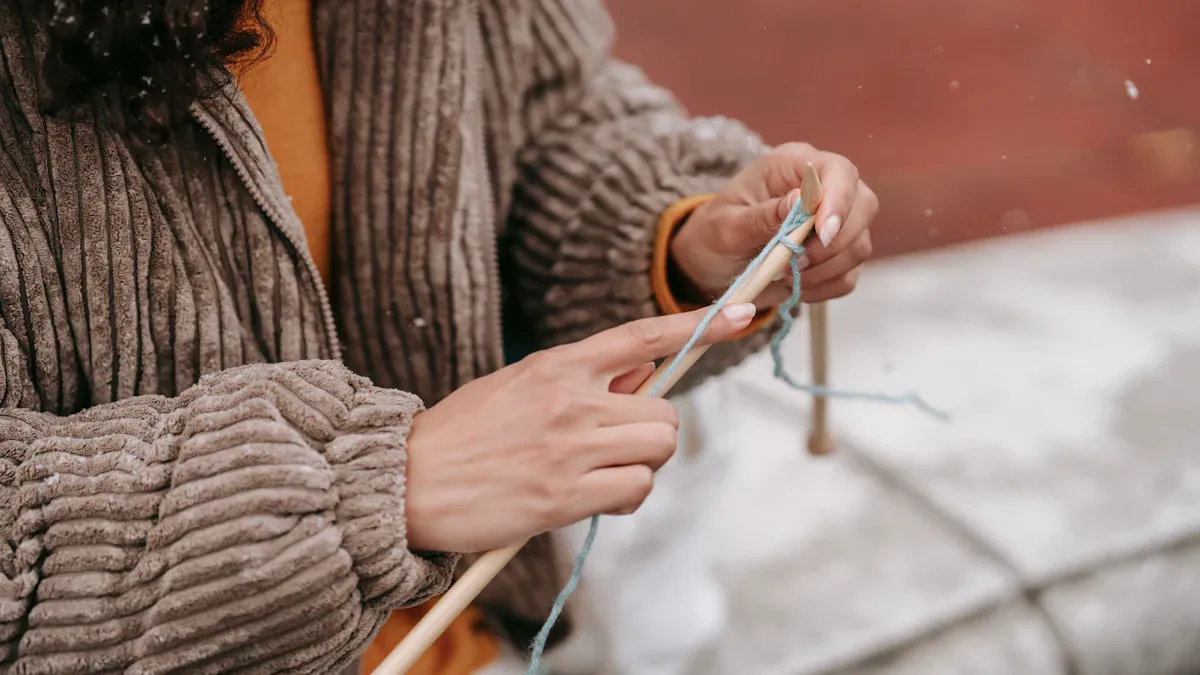
Beanies and Gloves
When cold weather hits, you probably reach for your favorite beanie or gloves. These winter accessories do more than keep you warm—they show off your style and personality. You see beanies and gloves everywhere, from city streets to snowy parks. People love them for their comfort and the way they complete any winter outfit.
Check out how the market for these accessories looks right now:
Aspect | Details |
|---|---|
Gloves Market Share | 19% of cashmere wearing accessories market |
Glove Preferences | 38% touchscreen-compatible, 44% cable-knit styles |
Gender Consumption | Men: 31% of glove segment consumption |
Regional Demand Shares | North America & Europe: 55% combined demand; Asia-Pacific: 34% consumption; MEA: 11% |
North America | 29% of global demand; 82% from U.S.; 58% online sales; peak demand Oct-Dec |
Europe | 26% of global market; 33% buyers prefer gloves; 41% value sustainable sourcing |
Asia-Pacific | 34% global consumption; China 53% of region; 67% e-commerce transactions |
Consumer Preferences | Women 64% of market; 62% cite softness and warmth as key drivers; men prefer neutral shades |
Seasonal Demand | High in fall-winter season; repeat customers frequent updated collections |
You can see that people want gloves that are soft, warm, and even work with their phones. Cable-knit styles remain popular, and many shoppers look for sustainable options. The market for winter accessories keeps growing. In 2024, it reached $3.5 billion and could hit $5.7 billion by 2033. Offline stores still lead in sales, but online shopping is catching up fast.
Aspect | Details |
|---|---|
Market Size 2024 | USD 3.5 billion |
Projected Market Size 2033 | USD 5.7 billion |
CAGR (2026-2033) | 6.0% |
Regional Revenue Share 2023 | North America: 35%, Asia Pacific: 30%, Europe: 25%, Others: 10% |
Market Drivers | Fashion trends, outdoor activities, athleisure, increasing online sales |
Consumer Segments | Children, teenagers, adults |
Sales Channels 2023 | Offline sales dominate with ~60% revenue share |
Material Segments 2023 | Cloth (50%), Felt (25%), Leather (15%), Silk (5%) |
Market Trends | Year-round accessory use, customization, sustainable materials, digital retail growth |
Challenges | Raw material cost increases, brand loyalty in saturated market |
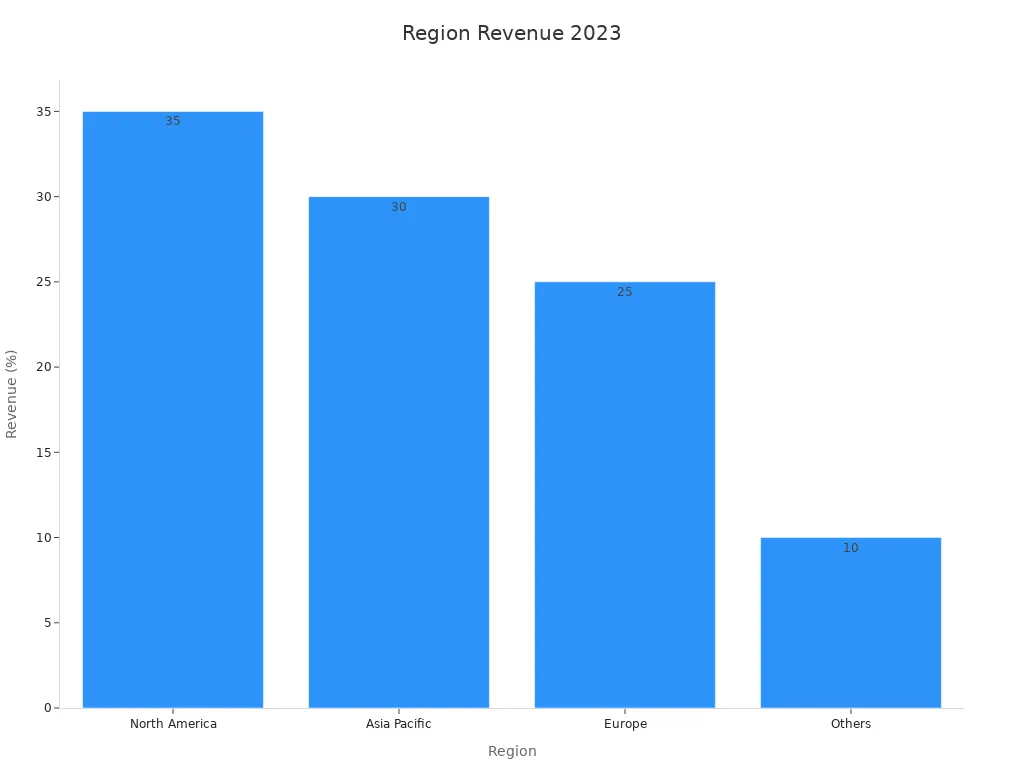
You might notice that many people now wear beanies and gloves all year, not just in winter. Custom designs and sustainable materials are big trends. If you enjoy knitting, you can make your own unique accessories and join this growing movement.
Statement Pieces
You do not have to settle for plain winter accessories. Statement pieces let you stand out and express your creativity. Designers now use playful shapes, bold colors, and new materials to turn hats, scarves, and gloves into works of art. You see accessories with layers, modular parts, and even sculptural forms. These pieces catch the eye and make any outfit pop.
Modern winter fashion loves to mix old and new. You might spot a classic cable-knit scarf made with recycled yarn or a beanie with a futuristic twist. Brands use nature-inspired textures and minimal designs to create accessories that feel both fresh and familiar. Many people want accessories that look good and feel good, so sustainable and lightweight fabrics are more popular than ever.
Social media and online shopping help these trends spread fast. You can find inspiration from around the world and try new styles every season. If you like to knit, you can experiment with bold patterns or eco-friendly yarns. Your next project could become your favorite statement piece.
Tip: Try making a bright, chunky scarf or a beanie with a unique stitch. You might inspire others to add more personality to their winter look!
Resources and Community Connections
Yarn Shops and Online Stores
You have more ways than ever to find yarn and supplies. Local yarn shops give you a place to touch the yarn, ask questions, and get advice from experts. Many shops also host workshops and classes. You can meet other knitters and learn new skills together. These shops help you feel like you belong.
Online stores make shopping easy. You can browse a huge variety of yarns and tools from your couch. E-commerce platforms let you order from anywhere in the world. You find rare colors, special fibers, and even handmade items. Many brands now reach global audiences and connect with niche markets through digital stores.
Online stores and e-commerce platforms offer convenience, variety, and global access.
Specialty yarn shops provide expert advice and host community events.
Craft fairs and pop-up shops help you discover unique yarns and meet other crafters.
Online tutorials and virtual workshops boost your skills and keep you engaged.
Social media groups and online communities help you share ideas and finished projects.
You see how both local shops and online stores help the knitting community grow. They make it easy for you to join in, no matter where you live.
Events and Festivals
You might love meeting other knitters face-to-face. Events and festivals give you that chance. You can join workshops, knitting parties, and big gatherings like Wool and the Gang events. These activities let you learn new tips, share your work, and make friends.
Attendance at community events shows strong engagement.
Workshops and knitting parties help you connect in person.
Party kits with supplies and videos make it easy for you to host your own event.
Stories from knitters show how these meetups build strong friendships and loyalty.
Tip: Try joining a local knitting event or festival. You might find new friends and learn something new!
You feel the energy and joy when you knit together with others. These moments help you build lasting memories and a sense of community.
Online Societies
You do not have to leave home to join a knitting group. Online societies bring knitters together from all over the world. You can join forums, social media groups, and video calls. These spaces let you ask questions, share patterns, and celebrate your progress.
Many online communities offer:
Friendly forums for sharing tips and stories
Virtual knit-alongs where you work on the same project as others
Live Q&A sessions with expert knitters
Spaces to show off your finished pieces and get feedback
You find support, inspiration, and friendship in these online groups. Whether you are a beginner or an expert, you always have a place to belong.
Modern knitting culture welcomes everyone. You see creativity, tradition, and new ideas come together in every stitch. Digital platforms connect you with knitters worldwide. Communities grow stronger as people share skills and stories. The market keeps expanding, with Asia-Pacific leading and North America focusing on sustainability.
Aspect | Details |
|---|---|
Market Size (2023) | |
Growth Projection | Up to $998.6B by 2031 |
Top Region | Asia-Pacific (45.32% share) |
Material Preference | Natural fibers (48.5% market share) |
You shape the future of knitting. Try new patterns, join a group, or share your favorite trends. What will you create next?
FAQ
What if I am new to knitting? Where should I start?
You can start with simple patterns like scarves or dishcloths. Visit a local yarn shop or join an online group. Many websites and YouTube channels offer free beginner tutorials. You will learn quickly with practice and support from the community.
Can I join a knitting group if I do not know anyone?
Absolutely! Most knitting groups welcome new faces. You can find groups at libraries, cafés, or online. Just show up with your yarn and a smile. People love to help beginners and share tips.
How do I find sustainable yarns for my projects?
Look for yarns labeled as organic, recycled, or locally sourced. Many brands now focus on eco-friendly options. Ask at your local yarn shop or check online stores. You help the planet when you choose sustainable materials.
Is knitting only for women?
No way! Knitting welcomes everyone. You see men, women, and people of all ages and backgrounds enjoying this craft. Many famous designers and artists knit. You can join the fun, no matter who you are.



